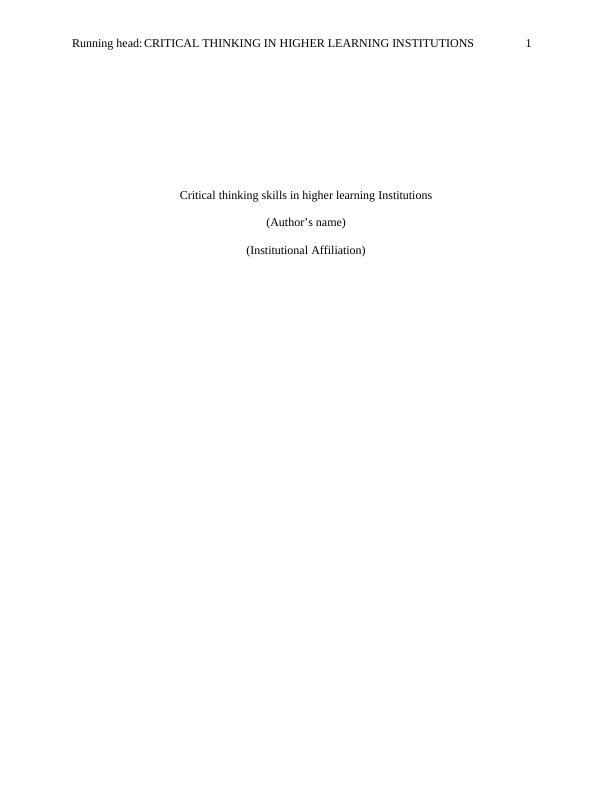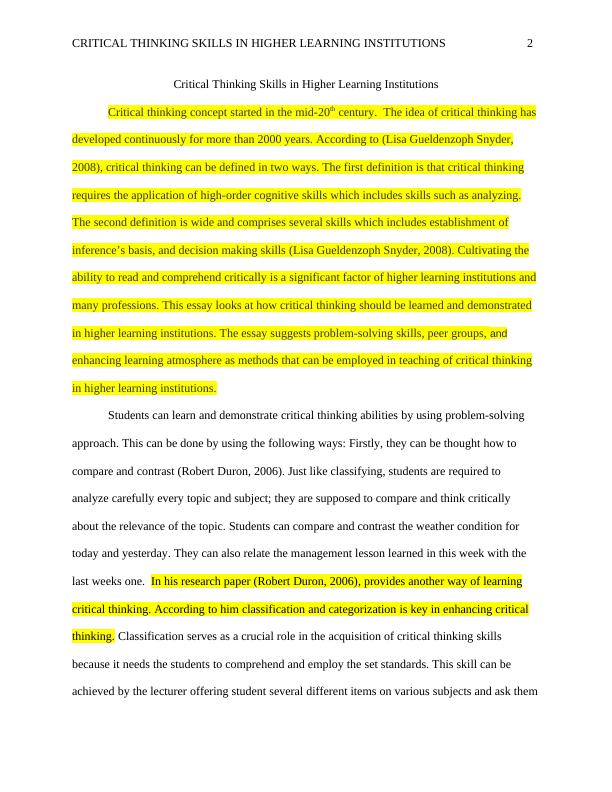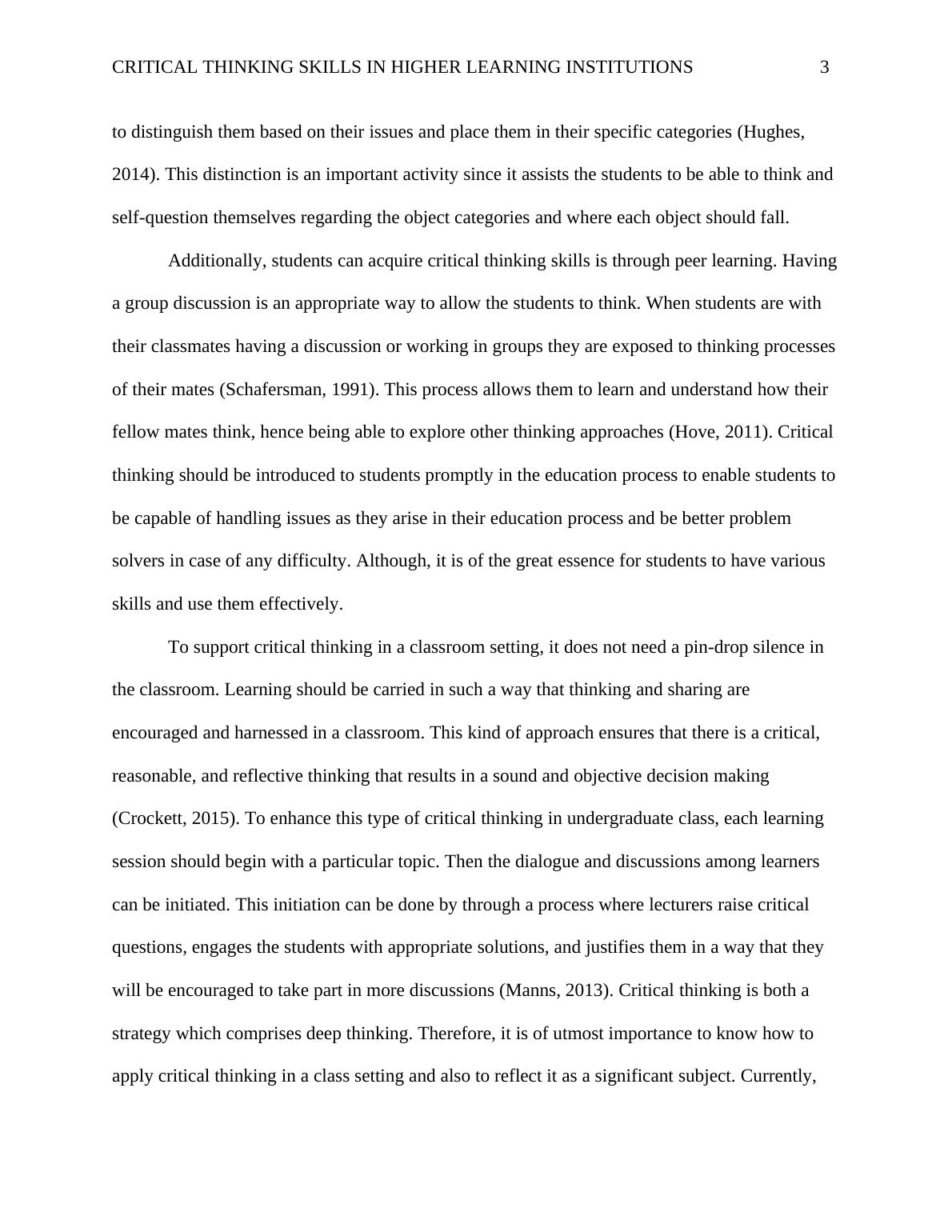FNSACC506 - Critical Thinking Skills In Higher Learning Institutions
6 Pages1450 Words61 Views
Victoria University | Melbourne Australia
Implement and maintain internal Control (FNSACC506)
Added on 2020-03-01
About This Document
In this document, we will discuss the ability to read and comprehend critically as a significant factor in higher learning institutions and many professions. This essay looks at how critical thinking skills should be learned and demonstrated in higher learning institutions. The essay suggests problem-solving skills, peer groups, and enhancing the learning atmosphere as methods that can be employed in the teaching of critical thinking.
FNSACC506 - Critical Thinking Skills In Higher Learning Institutions
Victoria University | Melbourne Australia
Implement and maintain internal Control (FNSACC506)
Added on 2020-03-01
ShareRelated Documents
End of preview
Want to access all the pages? Upload your documents or become a member.
The Learning Process 4 The Learning Process
|7
|1815
|121
Importance and Methods of Critical Thinking
|8
|1718
|114
Skills for Social Sciences
|11
|2847
|210



